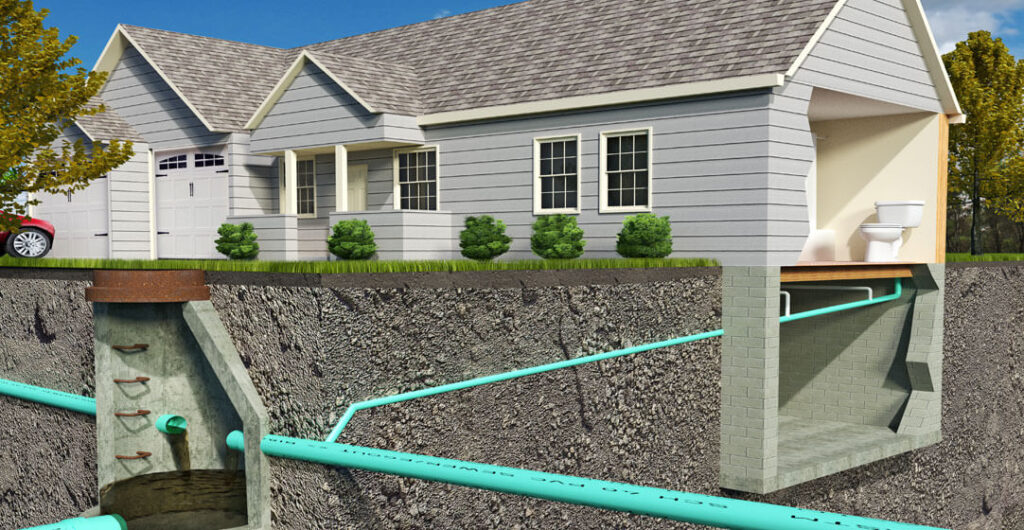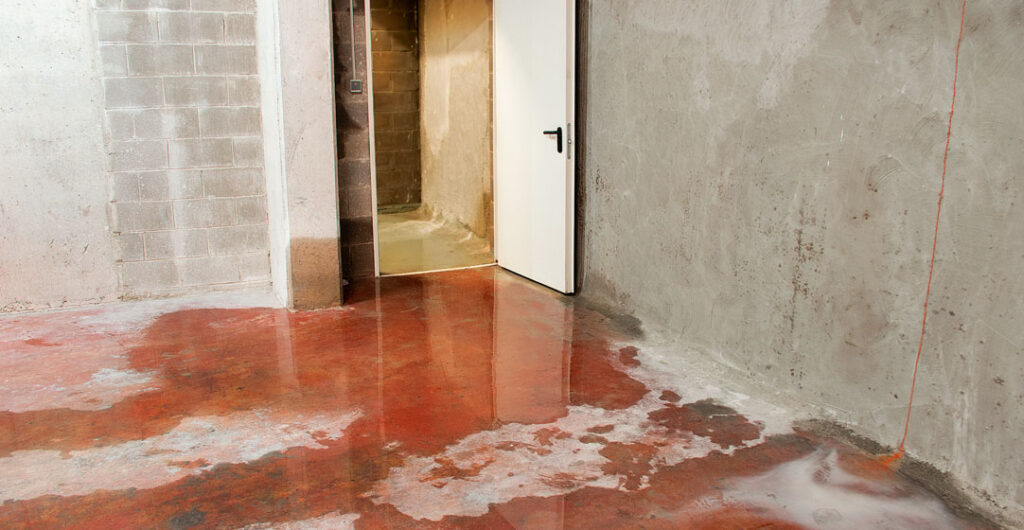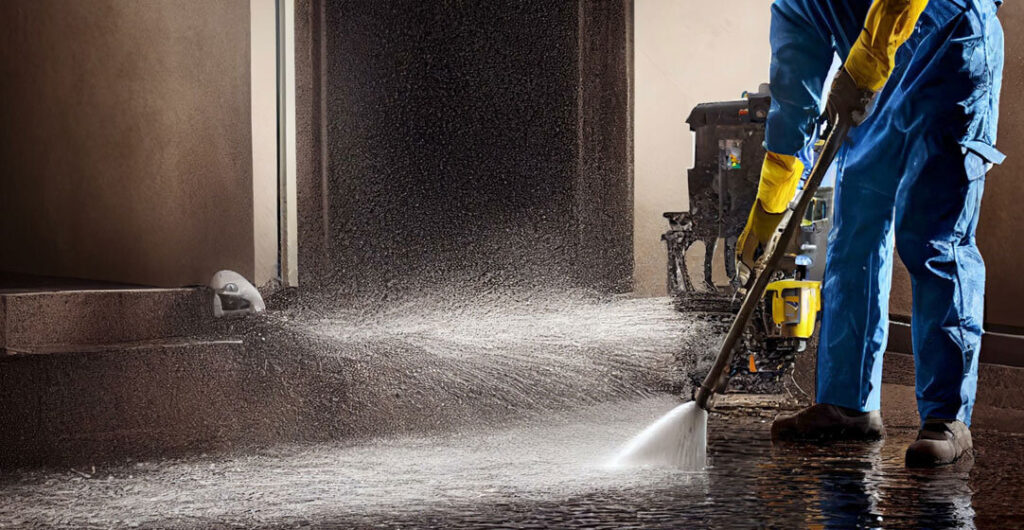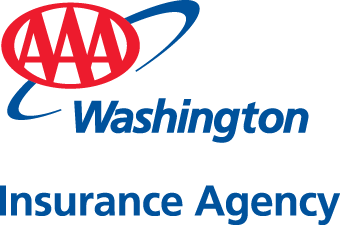Don’t go uninsured for sewage and stormwater backups in your home
It may seem inconceivable. It may seem gross. But, yes, you can have a sewer backup in your home that dumps hundreds of gallons of raw sewage all over the place. We’re talking dirty water erupting from every toilet, faucet and drain.
Ok, so this is an awful scenario. What could be worse than coming home to find pools of smelly water on your floors, walls and furniture. Well, it can get worse. Upon discovering this disaster, many people will call up their insurance agent only to be told that they aren’t covered.
Water and sewage backups are usually excluded from standard homeowners’ policies. (You read this correctly. A sewer backup is not included in most standard policies.)

To protect your home and family, consider getting two separate kinds of add-ons to your existing homeowners’ policy.
- The first type covers you for backups that happen in the pipes within the home.
- The second type covers you in the event that the water and sewer pipes that run from your property to the main municipal lines (or to a septic tank) backs up and pushes water back into your house.
Without these types of coverage, you will likely have to pay the entire cost for the damage and potentially thousands of dollars in remediation and cleanup.
What standard homeowners’ insurance covers
Homeowners’ insurance will pay out claims for damage caused by fires, windstorms, electrical system malfunctions, etc., but it won’t cover several other disaster scenarios. Damage caused by earthquakes and floods aren’t covered. Homeowners need an entirely new policy to cover damage from flooding or earthquakes. Sewage and drainage backups also won’t be covered.

Say, for example, a heavy rainstorm overwhelms an old section of municipal pipe, and the excess flow surges back through your pipes and pours out of the drains, sinks and toilets in your home. Or, say, a child flushes a toy down the toilet, and that causes a backup in the home’s plumbing. In both cases, you won’t be covered by a standard homeowners’ policy.
Is sewer backup insurance automatically included with homeowners’ insurance?
No, for full coverage, you will want to obtain two distinct drain- and sewer-backup insurance add-ons to your existing homeowners’ policy.
- The first type (which covers backups in the lines within your home) is called an endorsement for “a water backup of sewer and drain.”
- The second type (which covers backups to the lines on your property outside the home) is called “service line coverage.”
Typically, both are sold as add-ons to a homeowners’ policy, but standalone policies are also available.
Numerous companies sell drain- and sewer-backup insurance, including AAA. Just call a AAA agent and discuss your options.

What does sewer backup insurance cover?
Drain-and sewer-backup insurance is flexible. The policy always covers cleanup and remediation, but it also can cover damage to the home and property. You can find policies that will cover a wide range of damage, including the replacement of your home. The coverage limit can start at just $2,500 and go up to unlimited. This insurance is relatively affordable, but add-on policies tend to cost less than standalone policies.
Tip: Read your homeowners’ policy carefully and ask an agent about what the standard policy does not cover. In most cases, you can affordably buy add-ons that will cover these exclusions.
Here are five reasons why you should think seriously about adding drain- and sewer-backup coverage:
1. Water and sewer backups can happen to anyone.
Unlike earthquakes and floods where some homeowners most definitely are at much higher risk, almost anybody can experience a drain- or sewer backup. People who live in low-lying areas tend to be at a higher risk, but even people who live on a hill can experience a backup.
2. Cleaning up a sewer backup is no easy task.

It can cost several thousand dollars and take days to clean up a stormwater or sewer backup. You can’t simply mop up the water and effluents and dump it anywhere. Sewage and stormwater is loaded with bacteria that needs to be treated and removed. Specialized companies do this work. Plus, when a main water and sewage line gets overwhelmed, several homes in the same neighborhood can experience backups. So, you could be competing with your neighbors to hire a cleanup company — meaning you’re likely to pay premium prices to get the work done.
3. Other policies don’t cover stormwater and sewer backups.
Homeowners’ policies will cover certain types of water damage. For example, in some circumstances, a standard policy will cover the damage from a leaky roof or a dishwasher malfunction. However, homeowners’ policies won’t cover drain- and sewer backups unless you specifically buy add-on insurance. Likewise, federal and private flood policies won’t cover backups. Flood policies only pay claims when the disaster meets a strict definition of a flood.
4. You may have to pay even if it is not your fault.
Many homeowners are unwittingly connecting to municipal water and sewer lines that are decades old and in need of replacement. But good luck getting the city or county to pay for damage and cleanup inside your home if an aging sewer line on your street gets overwhelmed and causes a backup on your block. Although cities sometimes do pay a portion of the damages (and usually months after the fact), chances are you’ll be responsible for all the costs.
5. Peace of mind is worth a small cost.
Sewer backup insurance tends to cost a lot less than other specialty policies. You can buy a robust policy that covers your interior and exterior lines for roughly $350 per year. The precise cost depends on what the coverage entails, the coverage limit and your deductible. Let’s not forget how traumatic a sewer backup can be for anyone. Finding out that you’re not covered can turn an unfortunate event into a financial disaster.
A drain- and sewer-backup insurance policy is a solid investment for any homeowner. It is affordable, easy to obtain and can be customized to fit your needs and budget. As with all types of insurance, you may never file a claim. Hopefully you never do. But if you do experience a stormwater or sewer backup in your home, you will have the right coverage in place to clean up the mess and get your home back in good shape.
—Written by AAA Washington
—Top photo: Amixstudio/AdobeStock

